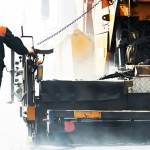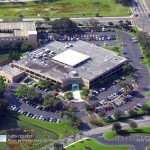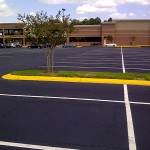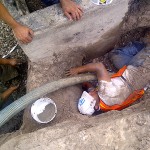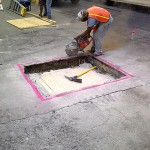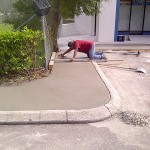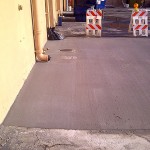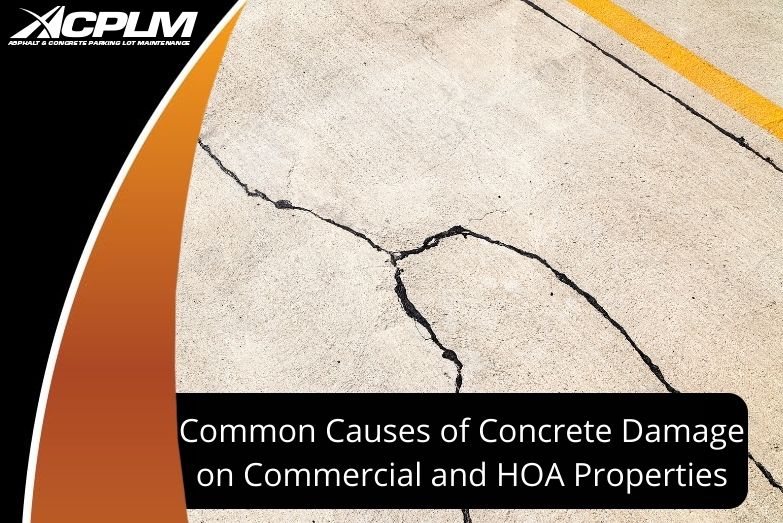
Learn more about concrete damage on your property.
Concrete surfaces are incredibly durable. Many studies indicate that the average concrete pavement can last 30-50 years – some last longer.
It all comes down to maintenance. Proper maintenance can extend the life of your concrete pavements by decades. You need to regularly inspect the pavements for cracks, blisters, curling, grazing, etc., and promptly fix identified issues. It stops or slows down concrete damage.
Better still, regular maintenance keeps your pavement in a safe, usable condition. The result is fewer accidents/incidents.
Begin by Understanding the Causes of Concrete Damage
The first step to long-term concrete maintenance is understanding the root causes of pavement damage. Where does it all begin?
Chemical exposure
Although concrete is resistant to many chemicals, especially naturally occurring chemicals found in the atmosphere, soil, and water, some chemical environments may prove too harsh for even the highest-quality pavements. Chemicals that are particularly harmful to concrete surfaces are acids, sulfates, alkalis, and salts.
In particular, acids are a massive threat to your concrete surfaces because cement isn’t very resistant to acid. No concrete surface can withstand prolonged exposure to acid with a pH of 3 or lower. Acid quickly reacts with calcium hydroxide found in cement, forming water-soluble calcium compounds, which then leaches away. Among alkalis, ammonium produces the worst concrete damage.
Corrosion of embedded metals
The corrosion of steel and other embedded metals is another major cause of concrete deterioration. When embedded steel corrodes, it naturally causes expansion. This expansion creates tension in concrete that can, after some time, cause spalling, cracking, and delamination.
The reason steel corrodes is that it’s not a naturally occurring substance. It’s the product of smelting and refining iron. This process adds energy to steel, resulting in a product that is thermodynamically unstable under standard atmospheric conditions. Therefore, over its lifespan, steel will keep releasing energy to go back to its original state – iron oxide/rust. This is known as corrosion.
Fire or very high temperatures
Finally, concrete surfaces perform exceptionally well under normal temperatures. However, the material can’t withstand fire or unusually high temperatures. Though concrete itself won’t burn, high temperatures cause it to lose its elasticity and flexural and compressive strength. If heated too quickly, the concrete surface may even spall as moisture tries to escape.
The extent of damage under high temperatures varies depending on the type and quality of the surface. For instance, research shows that concrete pavements with a low aggregate-cement ratio suffer a greater loss of compressive strength. Concrete with sandstone and expanded slag also tend to perform worse under high temperatures.
Other Causes of Concrete Damage
Four other common causes of concrete damage are improper installation, overloading, loss of support beneath the concrete structure, and abrasion. Abrasion damage is mostly the consequence of excessive rubbing and friction. It reaches a point where the pavement cannot withstand the wear anymore, resulting in surface erosion. In commercial and HOA properties, rubbing and friction mainly result from vehicular traffic.
Schedule Concrete Repair Today by Contacting ACPLM
ACPLM is the leading asphalt and concrete repair contractor in Florida. We specialize in pavement repairs, parking lot striping, parking lot signage, and general repairs. Call us today to schedule a no-cost consultation for concrete and parking lot maintenance in Tampa.



